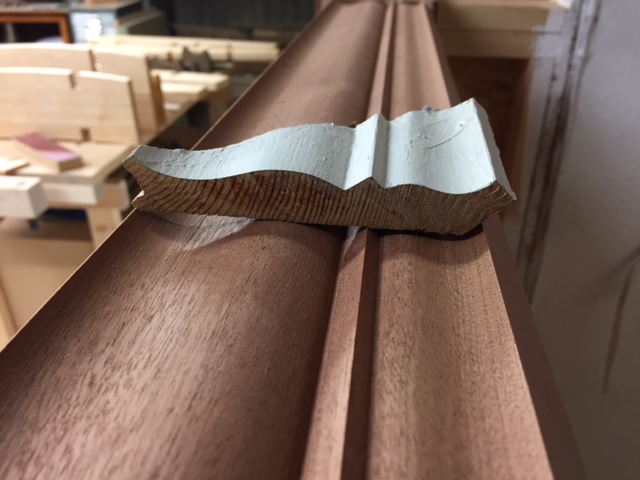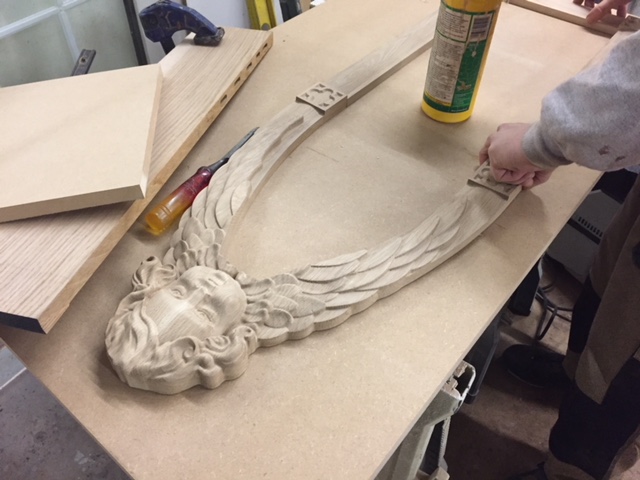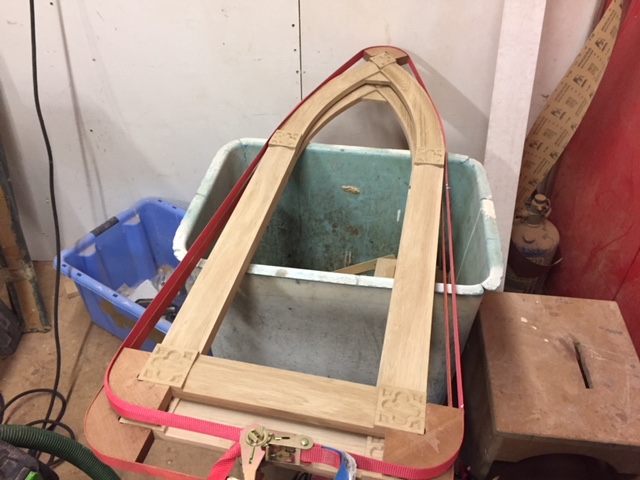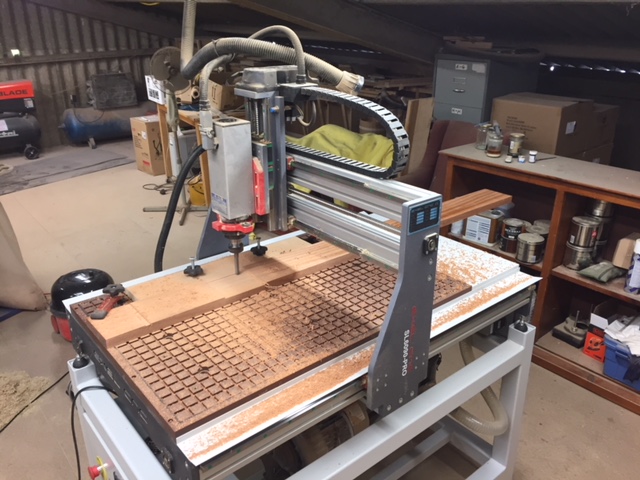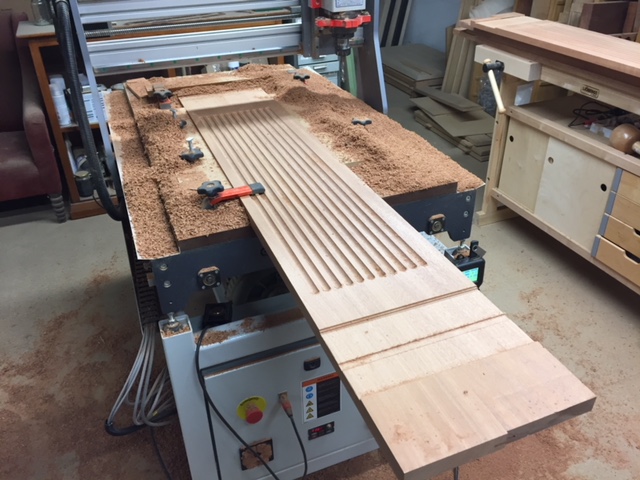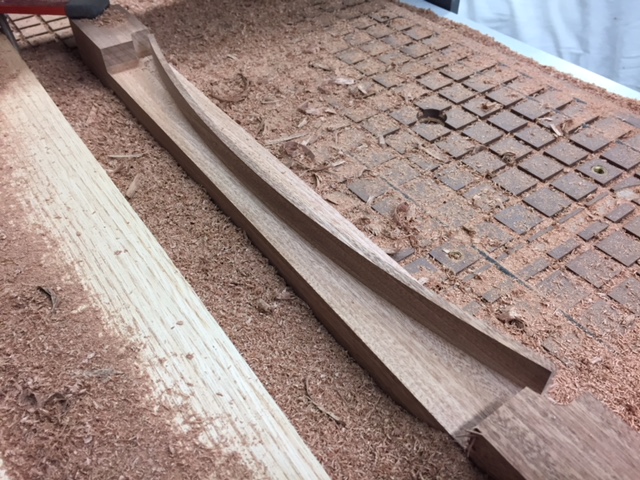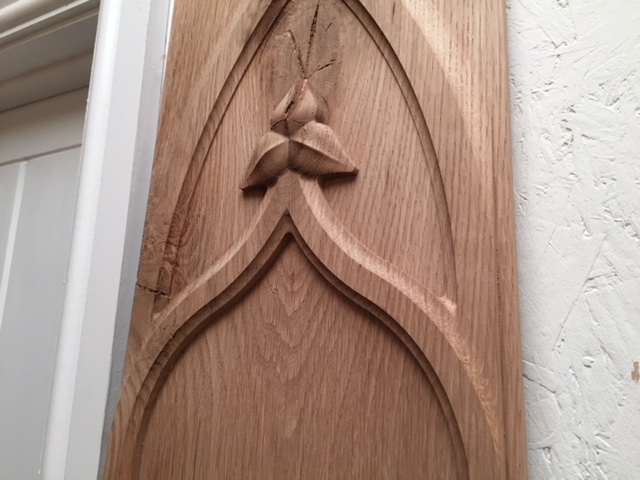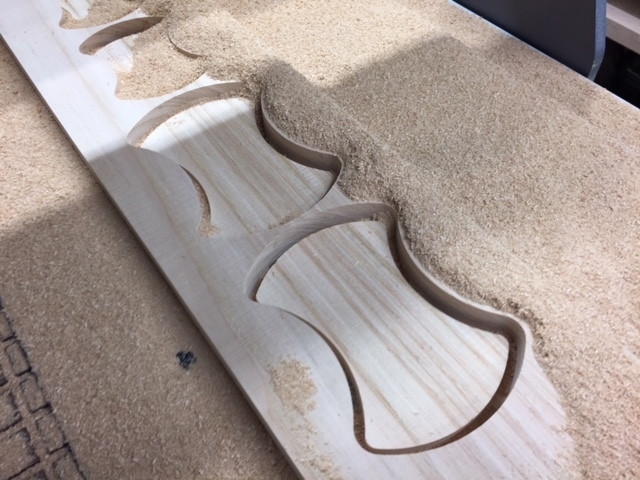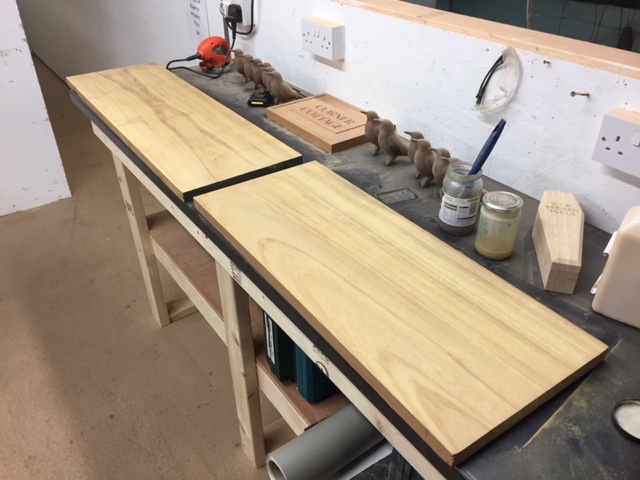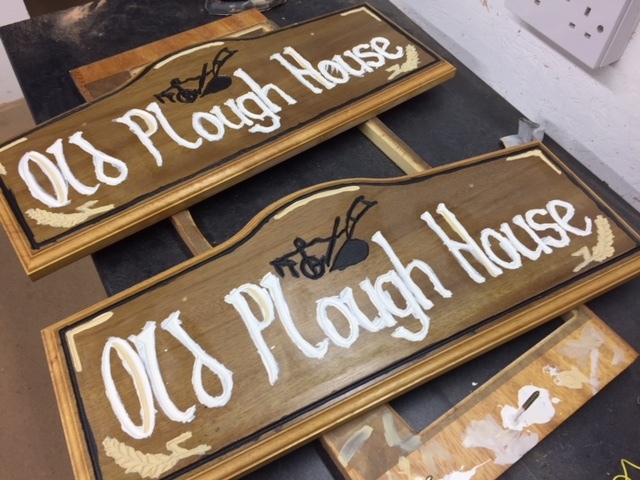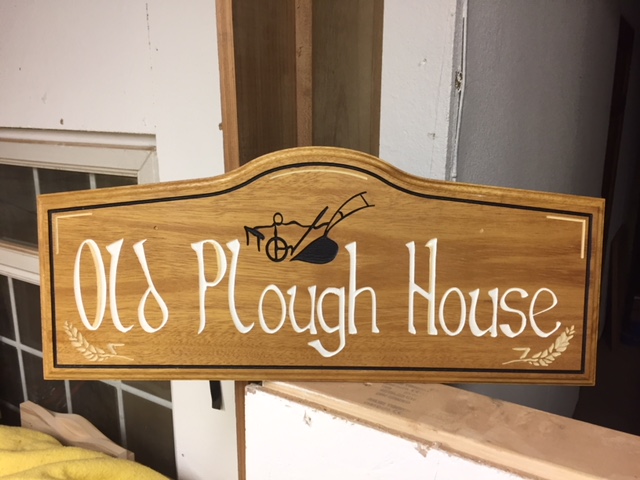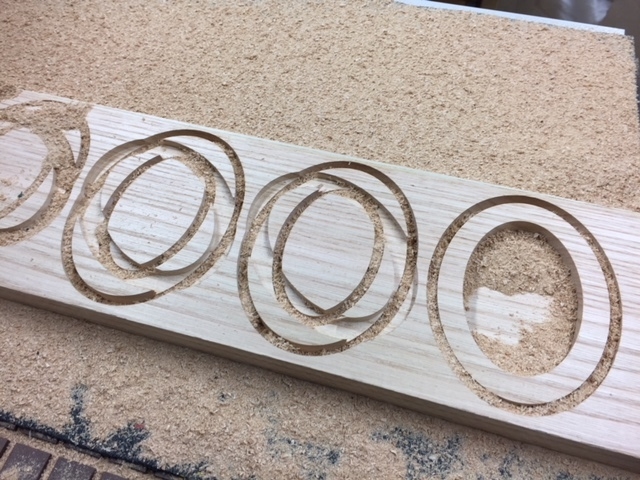I'm very happy to have actually made it into the workshop this week even though it was only for the last two days. On the plus side I've dealt with all other distractions so will now be working on a full weekly schedule from Monday. I've also taken the chance this week to do some much needed planning. Right up to the end of last year I was not sure if CeorfanWorks would be a pastime that I tried to get to generate some income or a full-time, full-effort endeavour to build something more than that. A great deal of reflection has led me to realise I am really passionate about doing something special with showing how digital technology can be used to make interesting, useful and beautiful wooden objects. As such it's all systems go. I'm still working on the details at the moment for how the business will evolve once I've got it straight in my own head. I do have a good idea what I'm going to be working on for the next couple of months though which should create more interesting and more regular things to look at here.
I read a book this week called "Why we make things and why it matters." by Peter Korn - a Christmas gift from my niece - this was serendipitous timing with regard to thinking about the direction of CeorfanWorks. The crux of the book, as I read it was about the authors quest to understand what motivated him to make fine furniture and the mental, physical and in some ways spiritual benefits of being a craftsmen. There was a lot that resonated with me about what I want to do and how I feel about making things. It definitely didn't make me feel less motivated to take it somewhat more seriously than I have been...
Thursday was spent doing some jobs round the workshop to improve storage and location of tools, finishing my immediate planning and checking how level the CNC machine was. I also drew up a job that I'll be cutting next week and sent it to the customer for approval. Tom who I share the workshop with asked me to make him a quick sign for something he's doing. The first one chipped out a bit so I cut a second one with better spacing and slightly less depth on the letters, these can be seen for comparison in the first picture below.
On Friday's this year I'm going to set myself a project each week that will be started and finished within a few hours. The idea is this will allow me to work on something for fun each week and give me the gratification of completing something quickly when I'm working on long-term jobs, it may also work as R&D for possible products and production methods.
This week for my Friday AM project, I decided to build a small coffin for the tools I break in the workshop. I already keep these in a small plastic box with RIP written on the top as a reminder to myself to try and avoid doing it in future... The box is not very attractive though and I thought it would be entertaining to build them a proper coffin so they can really rest in pieces. We'd recently acquired some chestnut in the workshop which apparently is known as poor mans oak as it looks similar but is not as dense.
I wanted the box to be as correctly proportioned as possible so I looked up coffin dimensions on a website that encourages you to build your own! I decided to go for making it in three pieces. The bottom two slotting together to make the box, for the top I decided to cut it from both sides so I could create a lip for it to sit into on the main body and also carve a bevel and some text onto it. You can see the results in the images below. The chestnut cut really quite nicely and everything fitted together well. I glued the two pieces that make up the main box and did minimal sanding to get it to the state you can see in the last image. I'll apply some oil next week to finish it and then hopefully won't provide too many broken tools to go into it...








